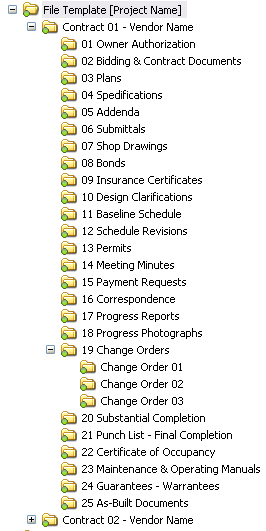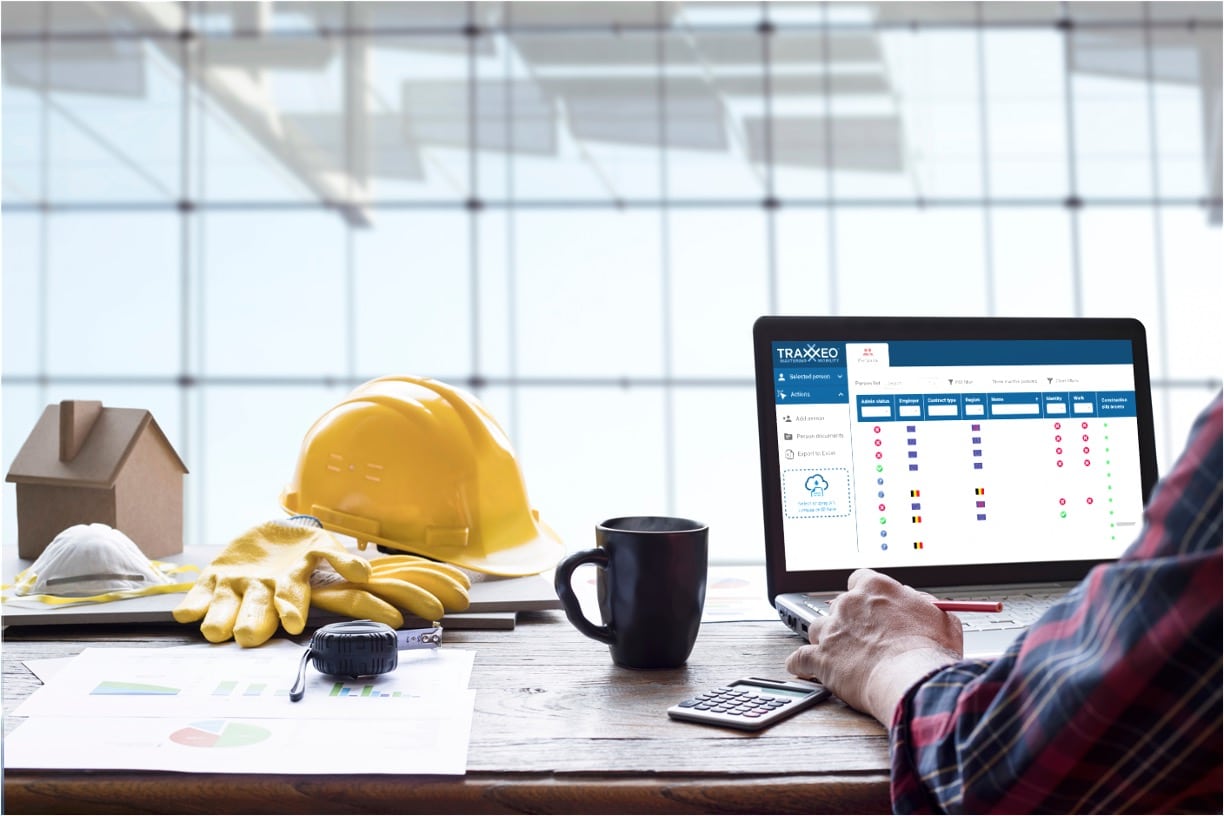Simplify Cooperation: The Power of Construction Document Management Systems
Simplify Cooperation: The Power of Construction Document Management Systems
Blog Article
Designer's Overview to Simplifying Building File Management for Reliable Job Implementation
In the detailed world of architecture and building, the reliable monitoring of project paperwork stands as a foundation for success. Engineers are charged with handling a myriad of illustrations, agreements, specs, and records, all necessary components for bringing a project to fulfillment. Nevertheless, the process of arranging, sharing, and keeping these records can usually end up being a maze of ineffectiveness and troubles if not managed meticulously. By discovering systematic approaches, cutting-edge devices, and sector ideal methods, designers can not just enhance their record management processes yet also lead the way for extra efficient project implementation. Allow's browse through the crucial strategies and options that can reinvent just how architects manage construction paperwork, making certain tasks are supplied with accuracy and timeliness.
Importance of Effective Document Administration
Why is efficient document administration important for engineers in the building and construction sector? Reliable paper administration is crucial for engineers in the construction sector as it plays an essential duty in ensuring the successful implementation of jobs. Engineers take care of a huge variety of records, ranging from layout illustrations and specs to licenses and agreements. Appropriate organization and administration of these files are crucial to maintain task timelines, guarantee conformity with policies, and assist in reliable communication among task stakeholders.

Reliable file administration allows engineers to gain access to crucial details promptly, track task development accurately, and alleviate threats related to mistakes or omissions. By executing structured paper monitoring processes, engineers can boost partnership with clients, service providers, and other employee, leading to boosted job end results and client fulfillment.
Additionally, reliable record management assists designers preserve a comprehensive task background, enabling them to take advantage of past lessons and experiences discovered for future tasks. In today's hectic construction market, where prompt decision-making and info sharing are extremely important, reliable paper administration is a keystone for success.
Strategies for Improving Record Organization
Effective paper administration methods not just guarantee job success for architects in the construction market however additionally lay the structure for carrying out strategies for streamlining record organization. To streamline document organization efficiently, engineers need to first establish a clear identifying convention for files and folders. Consistency in naming data based on task phases, record types, and relevant information will help with easy access and minimize complication.
Using cloud-based storage space options can additionally improve paper organization by supplying a central area for all project-related data - construction document management. This permits group participants to access one of the most current files from anywhere, promoting collaboration and effectiveness. Implementing version control mechanisms additionally refines file company by tracking adjustments, protecting against clashing edits, and making certain that the current versions are constantly available
Additionally, producing a rational folder framework with assigned subfolders for different document categories, such as specs, drawings, and contracts, can enhance record monitoring procedures. Routinely evaluating and purging out-of-date or redundant documents will help keep a lean and organized record repository, inevitably boosting performance and job end results.
Leveraging Modern Technology Devices for Partnership
In the realm of modern architecture, engineers are progressively relying upon innovative modern technology tools to foster seamless cooperation amongst task stakeholders. Leveraging innovation for cooperation simplifies interaction, improves effectiveness, and enhances total task results. Cloud-based platforms such as BIM 360 and Procore enable real-time accessibility to project papers, enabling designers, contractors, and customers to team up properly no matter their physical place. These devices assist in concurrent editing, version control, and immediate updates, decreasing delays click reference and mistakes caused by miscommunications.
Digital layout and building (VDC) software program like Revit and AutoCAD Style enable designers to create comprehensive 3D versions that can be shared and modified collaboratively. This real-time collaboration enhances style accuracy, coordination, and visualization, leading to much better decision-making throughout the job lifecycle. In addition, communication devices like Slack and Microsoft Teams provide instant messaging, file sharing, and video clip conferencing capabilities, fostering seamless communication amongst group members and stakeholders.
Ensuring Accuracy and Variation Control

Reliable variation control likewise assists in managing document approvals and making sure that only authorized employees make modifications. Architects ought to develop clear protocols for recording modifications, including timestamps and individual identification, to develop an audit trail for liability. On a regular basis communicating with the job team concerning version updates and adjustments is necessary to prevent confusion and keep alignment throughout the building and construction process.
Finest Practices for Paper Sharing and Accessibility
Having developed a durable system for version control in building paper management, engineers can now focus on optimizing record sharing and gain access to approaches to enhance collaboration and performance among project stakeholders. These systems provide real-time access to job papers, making it possible for team participants to watch, edit, and comment on data simultaneously.
Moreover, implementing role-based access control is necessary for keeping data safety and security while assisting in partnership. Assigning different permission levels to team participants makes sure that delicate info is just obtainable to accredited personnel. On a regular basis upgrading accessibility approvals based on project needs and group adjustments is critical for keeping data integrity.
Incorporating project management software program with paper sharing systems can additionally streamline process. This assimilation permits smooth communication, job tracking, and paper monitoring within a single user interface, lowering the requirement to webpage switch in between numerous devices. By adhering to these best methods, designers can create a much more effective and collaborative document sharing setting, ultimately causing effective task implementation.

Conclusion
Finally, efficient building record administration is vital for successful project execution. By executing techniques for company, leveraging technology tools for collaboration, guaranteeing precision and variation control, along with adhering to finest techniques for paper sharing and access, architects can improve their process and enhance general task efficiency. Focusing on these facets of document management will lead to smoother task execution and much better end results for all stakeholders involved.
Effective file monitoring is necessary for engineers in the building industry as it plays a critical duty in making sure the effective implementation of jobs. construction document management. Proper organization and monitoring of these documents are vital to keep project timelines, make sure compliance with guidelines, and help with effective interaction among project stakeholders
Efficient record administration methods not just make certain project success for architects in the construction sector however additionally lay the structure for applying techniques for streamlining document organization. One key technique is establishing a central paper database where all group participants can access the latest versions of drawings, requirements, and other project records.Having established a robust system for variation control in building record administration, engineers can currently focus on enhancing file sharing and accessibility methods to enhance partnership and efficiency among job stakeholders.
Report this page